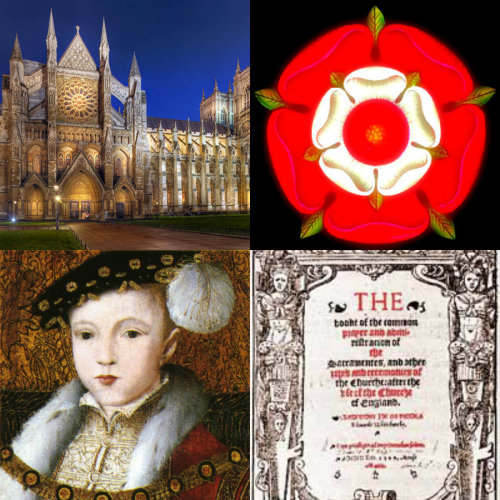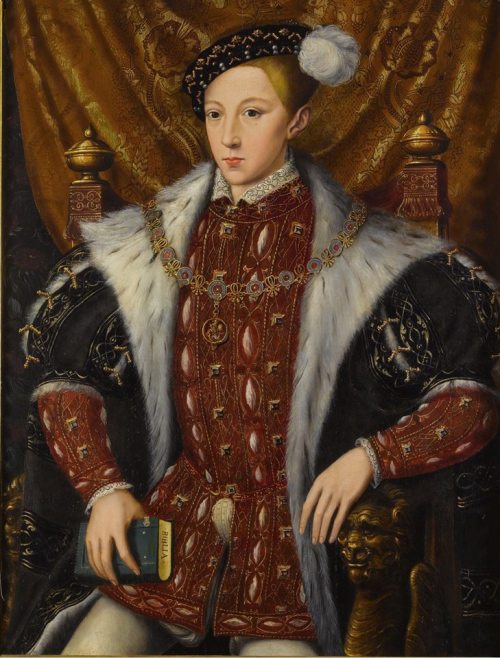minervacasterly:On the 8th of August 1553, Edward VI was laid to rest at Westminster Abbey beneath a
minervacasterly:On the 8th of August 1553, Edward VI was laid to rest at Westminster Abbey beneath a white marble vault in the Lady Chapel. The night before, a procession was led with “great company” of men and children, including Henry VIII’s bedesmen from the Greyfriar’s Church and Edward’s servants who wore black. Among the many symbols displayed ere the traditional Tudor symbols: The Welsh dragon, the greyhound, his father’s lion and of course, the Tudor rose which represented the union of the two warring houses of Lancaster and York. A symbol which would be shown on every Tudor’s coronation and funeral. Behind them came the coffin “covered by a canopy of blue velvet upon a chariot decorated with cloth of gold pulled by seven horses.” (Skidmore) Edward VI’s effigy was scuLpted by Nichollas Bellin, and in it he wore the garter collar and bore the standards of the Tudor rose and the Seymour insignia.“At his burying was the greatest moan made for him of his death as ever was heard or seen.”Londoners mourned the loss of their last Tudor King. In spite of his reign facing many rebellions, the fact that he died young was a tragedy that was felt by everyone. And as a king, he showed a level of firmness and coldness that reminded people of their first two Tudor monarchs.His sister (the yet to be crowned Mary I) feared a Protestant funeral would make her look weak in the eyes of the Lutherans who she said “would only become more audacious, and would proclaim that she had not dared to do her own will”. Renard and others in her council advised caution and told her of the seditious talk that had been circulating among Protestant circles in the capital, adding that giving him a Catholic funeral would make her subjects “waver in their loyal affections” for her. In the end Mary agreed to a compromise and five days after her triumphant entrance into London, she ordered her brother’s burial. His body was moved from Whitehall where it had been residing for almost a month to Westminster where he was buried following Protestant liturgy. The Mass was presided by the Archbishop of Canterbury Thomas Cranmer with the Marquess of Winchester acting as his chief mourner. Meanwhile Mary held a separate requiem (Catholic) Mass for his soul at St. Peter’s chapel in the tower of London presided by George Day, Bishop of Chichester which according to one observer was considered a great insult to his memory and “prepared the way for papistry just like an advance raiding party.”Sources:Mary Tudor: England’s First Queen by Anna WhitelockEdward VI: The Lost King of England by Chris SkidmoreOn this day in Tudor history by Claire Ridgway -- source link
Tumblr Blog : minervacasterly.tumblr.com
#history#edward vi#16th century#kings

